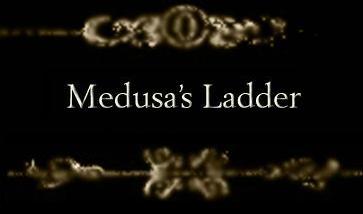|
|
|
|
|
|
|


|
4.10.9
A Girl in Trouble is a Con/temporary Thing: Women on Mysteries A while ago, I posted something on the Women of Esoterica blog about the imagery of 1960s era gothic genre mystery book covers. There is a standard template: A woman in a nightgown is fleeing a large, isolated, creepy mansion, in which a single window is illuminated. In the foreground, there are usually some ruins or rocks blocking her path, indicating she is trapped. There are many variations and interpretations of this as well. Here is part of the blog post I wrote before: Even with the ones that strayed from this exact cookie-cutter template, the covers still contained the elements of such.If this is the case, what can we extrapolate from contemporary mystery genre book covers about our so-called "post-feminist" era? I recently bought a copy of the British mystery-lit magazine, The Strand Magazine; in it is a previously unpublished Mark Twain short story that I couldn't wait to read. Browsing the magazine, which of course contains many ads for new mystery fiction, I noticed some things about the covers.
Of course, this can be viewed in several ways. In keeping with my previous critique of the 60s era gothic mysteries, in which the scene fairly shows a contemporary woman's social predicament and angst-filled role of the times, the current mystery covers could also be seen as a frustration of sorts. As an example, the last presidential election may embody the general sense of it—looking at it simply in terms of gender--women came quite close to becoming our president, and our vice president. There are huge considerations of how women's interests would actually have been served had one of those candidates been victorious, but again, looking at it purely from the gender/power/presence angle, there's a sense of frustrated, approximate realization. Could this "commentary" the covers display have something to do with the mystery genre itself? It seems to be the Trickster of the fiction world. In the stories, things are rarely as they seem, there are themes of cloaked identities, impersonations and imposters, all manner of deceptions, twists, reversals, and broken boundaries.
Also curious are what I've called the 'fetish mysteries'—subgenre mass market mystery series that cater to very particular interests. They include entire series based around chocolate, knitting, cats, tea, crosswords, baked goods, etc. Their covers are intriguing, often contain hidden things and visual puns, and after browsing through the lot of them, seem somehow akin to carnival art—there's a whole otherworld going on. Since the Trickster archetype/persona often acts as a release valve of sorts for the larger culture, it's no wonder that the images chosen for the book covers are dynamic, reflecting pertinent and changing social dynamics. *A note about the book cover images pictured here—every one of these were advertised in the same Feb-May issue of The Strand Magazine. Sources: Women of Esoterica Blog: "Woman, light, house: Mid-Century Depictions of the Gothic Genre
Visit Richelle's blog: Beamships Equal Love
|